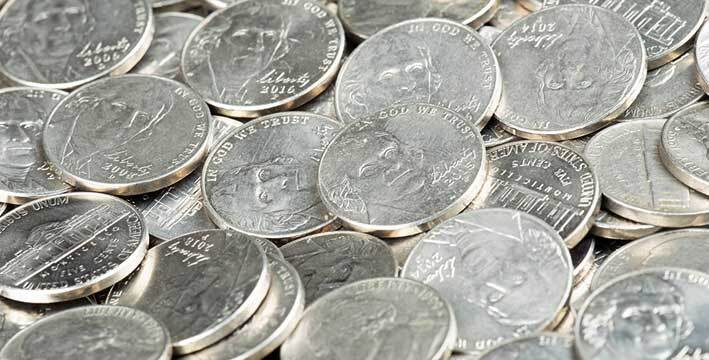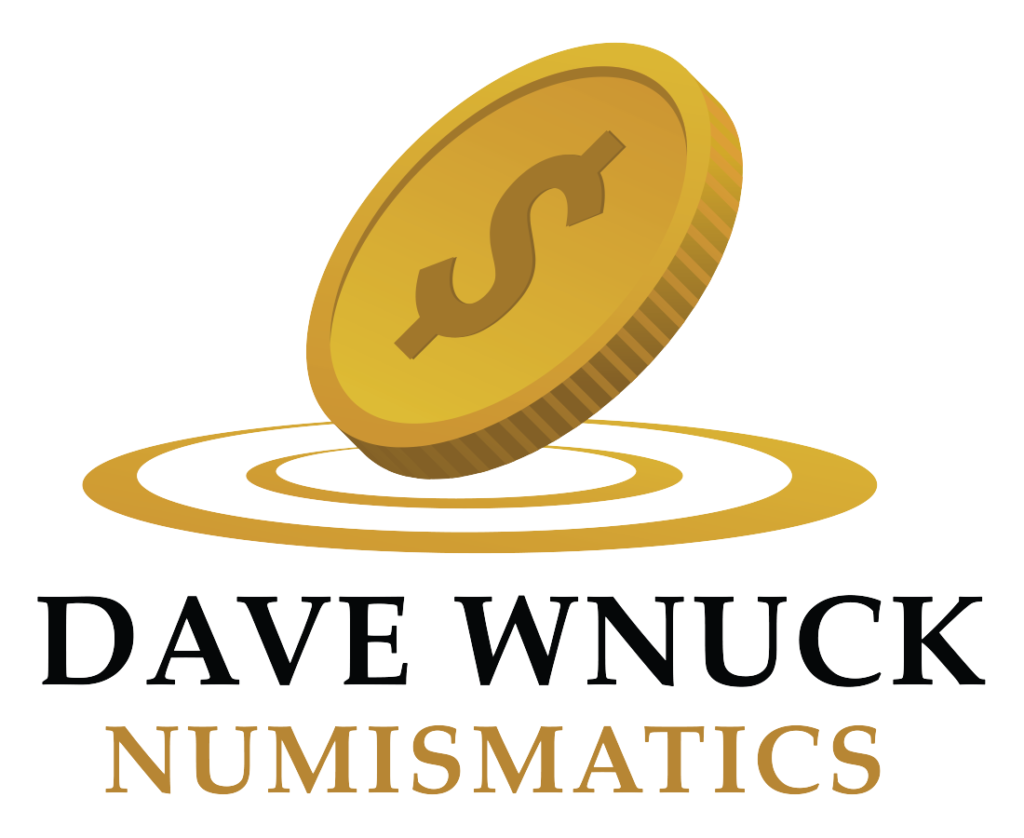The US nickel is a coin often overlooked in today’s commerce yet one with a fascinating history. First introduced into circulation in 1866, the current iteration of the nickel is composed of 75% copper and 25% nickel. However, nickels consisting of copper and silver were struck during World War II to meet the military’s need for supplies containing nickel. Some of these silver nickels are valuable so it’s worth keeping an eye out for them.
When Were Nickels First Created?
The half-dime, which was the forerunner to the nickel, is considered the first coin ever issued by the United States Mint. The half-dime began circulating in 1792 and was comprised of some silver. When the half-dime was discontinued, silver did not return to US coinage until the 1940s.
In 1866, the first nickel was introduced. This new coin took its name from the metal in its composition – 25% nickel and balance copper. It became a mainstay of US commerce.
Which Nickels Have Silver?
During World War II, nickel became a vital part of the war. The metal was used to produce tank armor, anti-aircraft guns, and other military materials. Because of the need for nickel for the war efforts, Congress gave the US Mint the authority to change the composition of nickels to 35% silver, 56% copper, and 9% manganese.
Between 1942 and 1945, all nickels issued into circulation were composed of 35% silver. After the war ended – in 1946 – nickels returned to a composition of 75% copper and 25% nickel. Silver nickels stayed in circulation for years, even though they were intended to be removed from circulation after the war. However, the value of silver rose, and today, the melt value of a silver nickel is a little over $1.00.
How Do You Identify Silver Nickels?
Silver nickels are challenging to differentiate from copper nickels, at least at first glance. The color is virtually the same, the reverse side shows the same view of Monticello, and the obverse side contains the same portrait of Thomas Jefferson.
Looking at the year on the coin is the easiest way to check for a silver war nickel. If the nickel is dated between 1942 and 1945, it is composed of 35% silver. If you look closer, silver war nickels also have a mintmark placed on the reverse side of the coin – a letter P (Philadelphia Mint), D (Denver Mint), or an S (San Francisco Mint) sitting above Monticello. These silver war nickels are also the first time a ‘P’ for the Philadelphia Mint appears on any US coinage.
How Do You Find Out the Value of Silver Nickels?
While the melt value of a silver nickel is worth about $1.00, the true value rests in its appeal to numismatists – collectors and dealers alike – and depends on its mint condition. These silver nickels often trade at a discount to their melt value, as coin buyers consider that they take up a lot of storage space for the amount of silver they contain.
At Dave Wnuck Numismatics, we’ve worked with many individuals in helping them identify and realize the greatest value for their coins. Make an appointment with Dave today to bring in your silver nickels for appraisal!
Find the Right Appraiser
Finding a trusted appraiser is the first step to obtaining a fair coin collection appraisal. You should look for appraisers who are full-time professional numismatists or recognized authorities in the numismatic marketplace.
Additionally, you should look for an appraiser who is a member of the Professional Numismatists Guild (PNG). PNG members, like our own Dave Wnuck, heed to a strict Code of Ethics in the buying and selling of numismatic merchandise.
The appraiser you choose to do business with should have a record of honesty and fair dealing and have the financial resources to pay you what a collection is worth.
Determine the Type of Collection
The goal of most collectors and heirs is ultimately to sell the collection for as much as possible. So, the first step for any appraisal is to determine the type of collection you have. The type of collection you possess often determines the interest level of coin buyers. There are three types of collections:
- A Collector’s Collection: This collection is a group of coins primarily put together from buying coins at auctions or from coin dealers. The collector had a goal and purpose for the collection, and they likely spent serious time and money assembling it.
- A Coin Accumulation or Hoard: This type of collection includes coins gathered from garage sales, antique shops, and flea markets. These collections are usually made up of “interesting-looking” coins and coins pulled from circulation, like silver and other obsolete coins.
- A Collection of US and World Mints (and similar items): This collection includes mint sets, modern commemorative coins, and proof sets. Coins in this type of collection are often still in their original packaging. They can be acquired, for example, from late-night TV show infomercials or from telemarketers.
The type of buyers that you want interested in your coins are looking for a purposeful, well-chosen collection of around 20 – 50 truly rare coins. If your collection consists primarily of proof and mint coin sets, buyers will be less enthusiastic.
Contact Dave Wnuck Today
At Dave Wnuck Numismatics, LLC, we are experts in coin collection appraisals, including US coins and currency collections, rare silver and copper coins, colonial coins & currency, world coins and currency, bullion, and 90% US silver collections.
We have worked with many individuals to help them identify and realize their collection’s greatest value.



